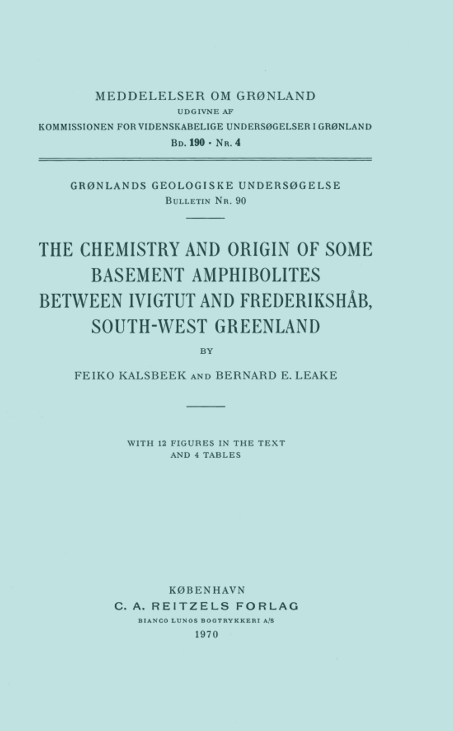The Chemistry and Origin of some basement amphibolites between Ivigtut and Frederikshåb, South-West Greenland.
DOI:
https://doi.org/10.7146/mog.v190.150330Abstract
Chemical and modal analyses of 54 amphibolites, 5 biotite gneisses and 5 hornblende-biotite gneisses, into which the amphibolites grade, confirm the field and petrographic evidence that the amphibolites were probably basic tuffs and lavas which, when mixed with varying amounts of quartzo-feldspathic sediment, gave rise to the hornblende-biotite gneisses on metamorphism. Plotted in an alkali-silica diagram 34 samples fall in the field of tholeiite basalt and 20 in the field of alkali basalt while traces of normative nepheline, never exceeding 4%, occur in only 10 samples. It is shown that the sporadic occurrence of garnet and diopside and the occurrence of up to 15% quartz are primarily controlled by the original composition of the samples. Garnet is entirely found in amphibolites with low Niggli mg values (0.36-0.45), diopside in samples with relatively high CaO, while modal quartz increases as mg falls. It is therefore possible that the more quartzose and garnetiferous amphibolites formed from late differentiates of the original basaltic magma, but the possibility cannot be excluded that contamination with sedimentary material has played a role, especially in increasing the modal quartz.

Downloads
Published
How to Cite
Issue
Section
License
Coypyright by the authors and the Commision for Scientific Research in Greenland. No parts of the publications may be reproduced in any form without the written permission by the copyright owners.

